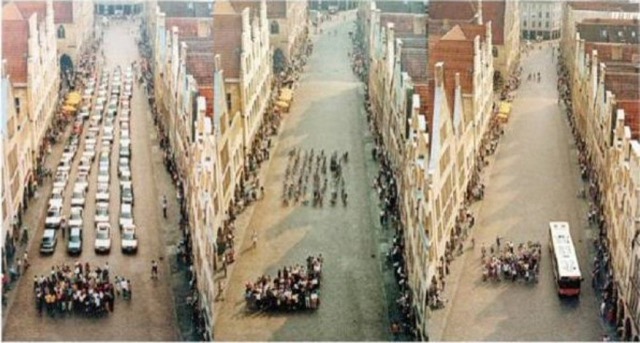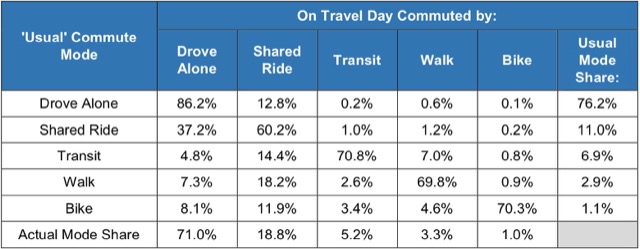Recent panels with the Antiplanner and several transit advocates exposed some disagreements that are legitimately difficult to prove one way or the other. For example, Jarrett Walker thinks that there is a pent-up demand for dense urban living and I don’t, but government regulation has so screwed up housing markets that it is hard to prove who is correct.
These photos are a lie. (Click image for a larger view.)
At the same time, the transit advocates made some claims that are easy to prove wrong. For example, one said that a two-track rail line can move as many people as a sixteen-lane freeway. Another used the above photos to show that a bus uses far less space to move people than cars. Both of these claims are highly deceptive. Continue reading









